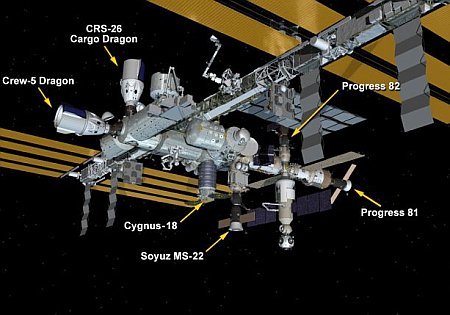Starlink and National Science Foundation sign deal coordinating spectrum use
SpaceX and the National Science Foundation (NSF) today signed an agreement coordinating the use of radio spectrum so that Starlink satellites will not interfere with radio astronomy.
The National Science Foundation (NSF) and SpaceX have finalized a radio spectrum coordination agreement to limit interference from the company’s Starlink satellites to radio astronomy assets operating between 10.6 and 10.7 GHz. The agreement, detailed in a statement released by NSF today, ensures that Starlink satellite network plans will meet international radio astronomy protection standards, and protect NSF-funded radio astronomy facilities, including the National Radio Astronomy Observatory (NRAO) and the Green Bank Observatory (GBO).
This deal was part of a larger negotiation with the entire astronomy community to limit the problems caused to astronomy by the 3,000-plus Starlink satellites presently in orbit. These other actions include
…continuing to work to reduce the optical brightness of their satellites to 7th visual magnitude or fainter by physical design changes, attitude maneuvering, or other ideas to be developed; maintaining orbital elevations at ~700 km or lower; and providing orbital information publicly that astronomers can use for scheduling observations around satellite locations.
This agreement demonstrates again that SpaceX has tried hard to be a good citizen in this matter. It also illustrates once again that ground-based astronomical observations is becoming increasingly impractical. Astronomers have to go to space, and if Starship flies as SpaceX desires, the company will provide them a way to do it.
SpaceX and the National Science Foundation (NSF) today signed an agreement coordinating the use of radio spectrum so that Starlink satellites will not interfere with radio astronomy.
The National Science Foundation (NSF) and SpaceX have finalized a radio spectrum coordination agreement to limit interference from the company’s Starlink satellites to radio astronomy assets operating between 10.6 and 10.7 GHz. The agreement, detailed in a statement released by NSF today, ensures that Starlink satellite network plans will meet international radio astronomy protection standards, and protect NSF-funded radio astronomy facilities, including the National Radio Astronomy Observatory (NRAO) and the Green Bank Observatory (GBO).
This deal was part of a larger negotiation with the entire astronomy community to limit the problems caused to astronomy by the 3,000-plus Starlink satellites presently in orbit. These other actions include
…continuing to work to reduce the optical brightness of their satellites to 7th visual magnitude or fainter by physical design changes, attitude maneuvering, or other ideas to be developed; maintaining orbital elevations at ~700 km or lower; and providing orbital information publicly that astronomers can use for scheduling observations around satellite locations.
This agreement demonstrates again that SpaceX has tried hard to be a good citizen in this matter. It also illustrates once again that ground-based astronomical observations is becoming increasingly impractical. Astronomers have to go to space, and if Starship flies as SpaceX desires, the company will provide them a way to do it.


